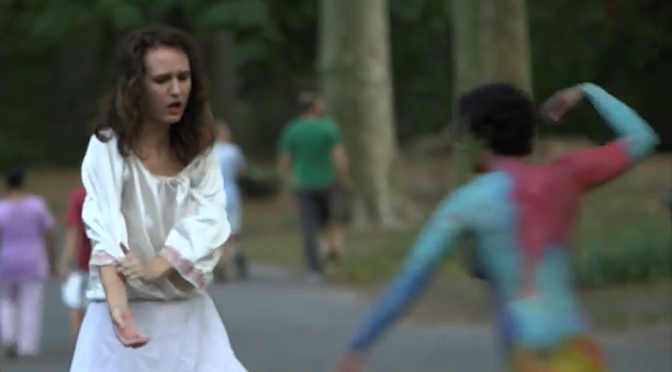Nudity has been used in theater for centuries, with examples dating back to ancient Greek theater. In fact, nudity was a common element in Greek tragedies and comedies, in which actors often appeared nude. In some cases, nudity served to portray characters such as gods or heroes who would embody ideals of physical beauty and strength. In other cases, it served for comedic effect.
In modern theater, nudity is often used to explore themes of sexuality, vulnerability, and power dynamics. It can also be used to challenge social taboos and conventions and to make a political statement.
More unusually, theater productions take nudity into public spaces, allowing actresses to present themselves not only to a paying audience but also to random passersby. In 2016, a performance of “The Tempest” by William Shakespeare took place in New York’s Central Park. It was produced by the Torn Out Theatre Company and focused on the cultural clash between the old and new worlds.
The play’s director, Pitr Strait, told the online portal Gothamist in an interview, “In almost all of his plays, Shakespeare touches in one way or another on the clash between the old and the new, the ordinary and the radical. Based on Shakespeare’s text, we have created a world where nudity makes sense: the islanders live far from society, free from danger, and have no need for clothing. Conversely, the castaways who wash ashore must themselves discover that their ornate, restrictive clothing is completely out of place in this strange, wild world.”
Consultant director Alice Mottola had previously explained the reasoning behind the elimination of traditional garb this way, “The Tempest is one of Shakespeare’s best-known and best-loved plays, but we want audiences to see it through new eyes, as ‘something rich and strange,’ as an audience would have seen it four hundred years ago. The goal of this project is a small step in a much larger process of normalizing the female body in a non-sexual context. To achieve this, we had to use nudity as an integral means of storytelling. The way we tell stories should fit the story we are telling, and our Tempest is a story of freedom, transformation, and acceptance. People may be shocked at first, but we hope that our audience will also change and by the end of the play no longer find nudity disturbing or shocking and may even feel more comfortable with the concept of nudity in general.”
Marisa Roper, who plays Miranda in the play, also emphasizes the feminist body-positive approach of the play, “As a woman, I feel like it’s time to stand up and say, hey, this is our body, there’s nothing to be ashamed of. It’s just our body. I hope a production like this can help normalize the female body. Our bodies are not inherently sexual.”
The production received unanimous critical acclaim and mostly positive reviews, despite some attempts by the conservative press to scandalize the performance. This gave the troupe the courage to perform the play again the following year, this time in Brooklyn’s Prospect Park.


